PJ Liesch and Phil Pellitteri (retired), UW Insect Diagnostic Lab
Revised: 2/23/2024
Item number: XHT1155
The most important insect cause of oak mortality is the two lined chestnut borer (Agrilus bilineatus). Two lined chestnut borer is a native metallic wood borer from the Family Buprestidae. This insect is considered a “secondary” pest that tends to spare trees in good health and is preferentially attracted to stressed, injured, and weakened oaks. Many stressors can weaken oak trees and open them to attack by this insect: environmental extremes (e.g., drought), defoliation by leaf-feeding insects (e.g., spongy moth), plant diseases (e.g., Armillaria), physical injury (e.g., construction injury or storm damage), girdling roots, soil compaction, road salt injury.
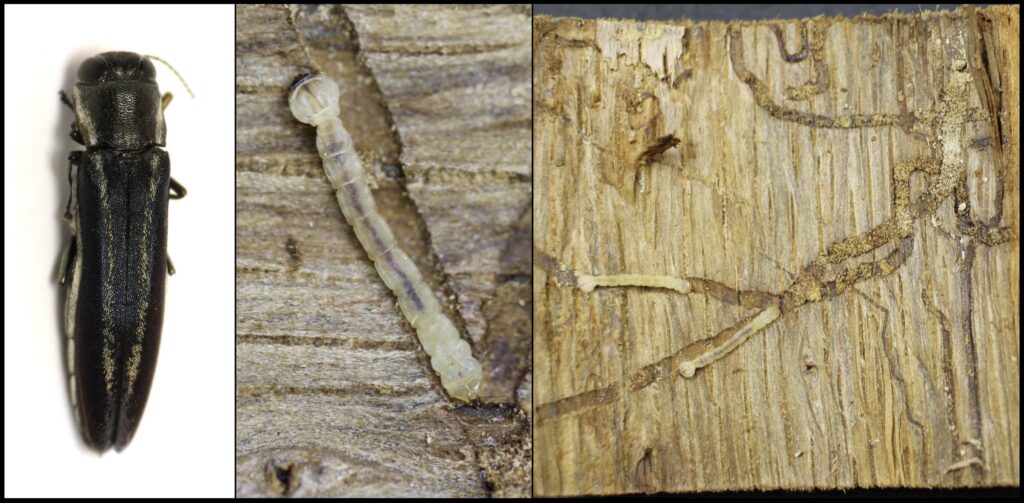
Center: two lined chestnut borer larva (PJ Liesch, UW Insect Diagnostic Lab) Right: frass-packed larval tunnels (PJ Liesch, UW Insect Diagnostic Lab)
Appearance: Adult two lined chestnut borers are slender, blackish beetles approximately 1/5 – 3/8 inch in length (4 – 10 mm). They have two pale stripes running down their backs. The overall body shape is similar to the closely-related, but non-native emerald ash borer. Larvae are pale, slender, and legless with a small, flattened area behind their heads. The body is clearly segmented. They have darkened mouthparts and a pair of spine-like projections (urogomphi) at the back end of their body.
Symptoms and Effects: Two lined chestnut borer attacks many types of oaks, including red, black, white and bur oaks. Attacks typically start in the sunny upper canopy of the trees and progress downwards over time. Symptoms include dieback at the end of branches, sparse, small or discolored foliage, or leaves that wilt suddenly, turn uniformly brown and typically remain attached to the branches. Leaf browning, and twig and branch death occur when two lined chestnut border larvae feed under the bark and destroy the nutrient and water conducting tissues (i.e., the phloem and xylem). This girdles and kills the branches above the point of feeding. Death of a tree due to a two lined chestnut borer infestation often takes multiple years.
Symptoms of two lined chestnut borer can resemble those of other issues (e.g., diseases, environmental stress, etc.). To confirm the presence of two lined chestnut borer, branches must be sampled to look for additional evidence. Peeling bark from sampled branches is a standard procedure to check for two lined chestnut borer. Infested branches will have feeding galleries (tunnels) under the bark; fresh larval galleries will be packed with pale frass (sawdust-like material). Larvae (slender, pale, legless) may also be present. Adult emergence holes (D-shaped, and 1/8 inch wide) can sometimes be spotted as an additional clue. In cases where two lined chestnut borer is suspected, consider working with a tree-care professional to obtain an appropriate sample to submit to the UW Insect Diagnostic Lab. It can also be helpful to contact to UW Plant Disease Diagnostics Clinic to inquire about testing a sample for diseases such as oak wilt.
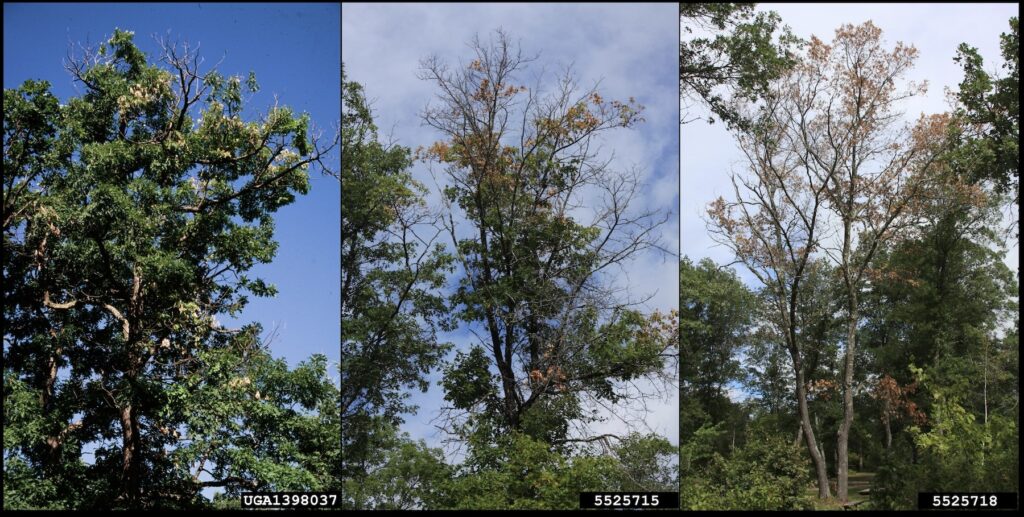
Life Cycle: Two lined chestnut borer overwinters as larvae and pupae in infested trees. Adult beetles emerge from trees through D-shaped holes in late May and are active until early July. After mating, eggs are inserted into bark crevices and hatch in one to two weeks. Larvae feed in cambial tissue just beneath the bark and cut off the vessels that transport food and water in the tree. There is one generation of two lined chestnut borer per year.
Control: The best defense against two lined chestnut borer is prevention. Healthy, non-stressed trees will not attract two lined chestnut borer adults, and vigorous trees are able to fight off invading borers. Several non-chemical approaches can be helpful for yard and landscape trees. Water oaks (approximately one inch of water per week) during dry periods to minimize drought stress and use proper mulching practices. Avoid compacting soil, injuring roots during construction, or changing the soil grade or water drainage around trees. Use good pruning practices to minimize risk of plant diseases and avoid damaging the bark. Remove and dispose of any two lined chestnut borer-infested wood before beetles emerge in mid-May. Securely cover oak woodpiles with plastic tarps from mid-May through mid-July to limit borer movement.
For small numbers of high-value yard and landscape trees, insecticide treatments are available to help protect trees from two lined chestnut borer and help them recover. Insecticide treatments are not feasible for large numbers of trees and large areas (e.g., woodlots and forested areas). Landowners with large wooded areas affected by two lined chestnut borer can reach out to a DNR forester for guidance.
Overall, the insecticide treatments for two lined chestnut borer are similar to those used to protect ash trees from emerald ash borer. Systemic insecticides (e.g., dinotefuran, imidacloprid, emamectin benzoate) can be applied to trees via soil drenches/injections, basal bark sprays or trunk injections. These treatments are typically applied in spring, prior to adult two lined chestnut borer activity to maximize protection. These products are best applied by a professional arborist to trees that are in relatively good health. Trees with advanced infestations of two lined chestnut borer and significant canopy thinning (i.e., > 40% canopy loss) will be difficult to save.
Defoliation of oaks by leaf-feeding insects (such as spongy moths or forest tent caterpillars) can be a significant stress, so consider managing these pests as needed during outbreaks to help maintain tree health and prevent issues with two lined chestnut borer.





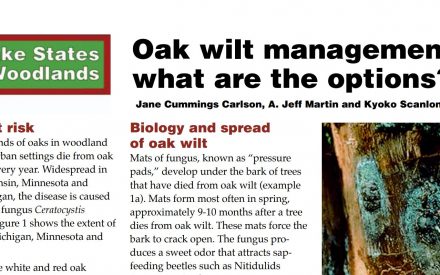 Oak Wilt Management—What Are the Options?
Oak Wilt Management—What Are the Options?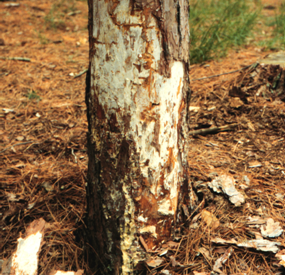 Armillaria Root Disease
Armillaria Root Disease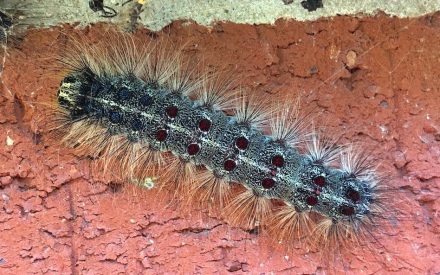 Spongy Moth
Spongy Moth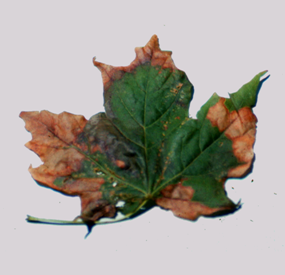 Anthracnose
Anthracnose


